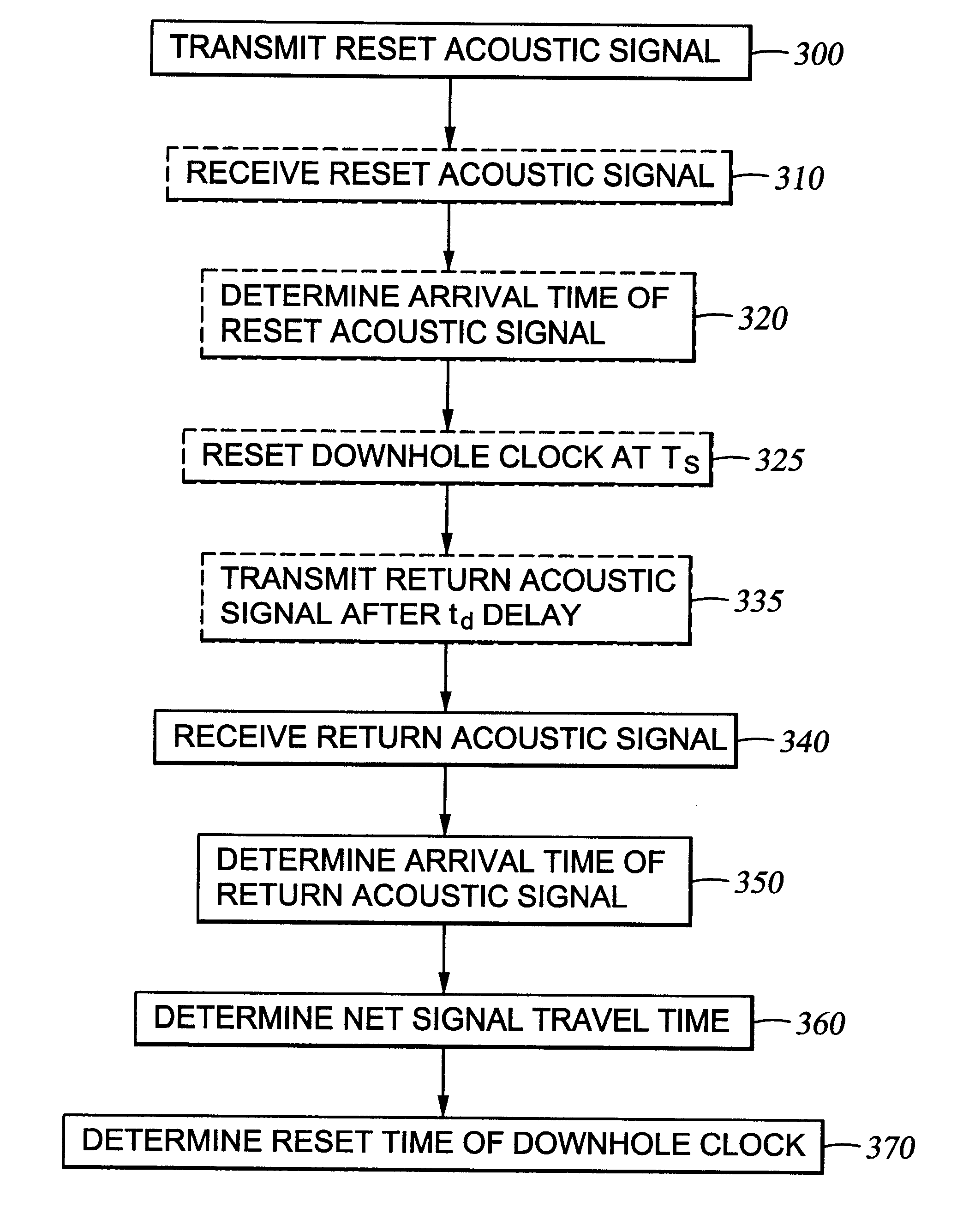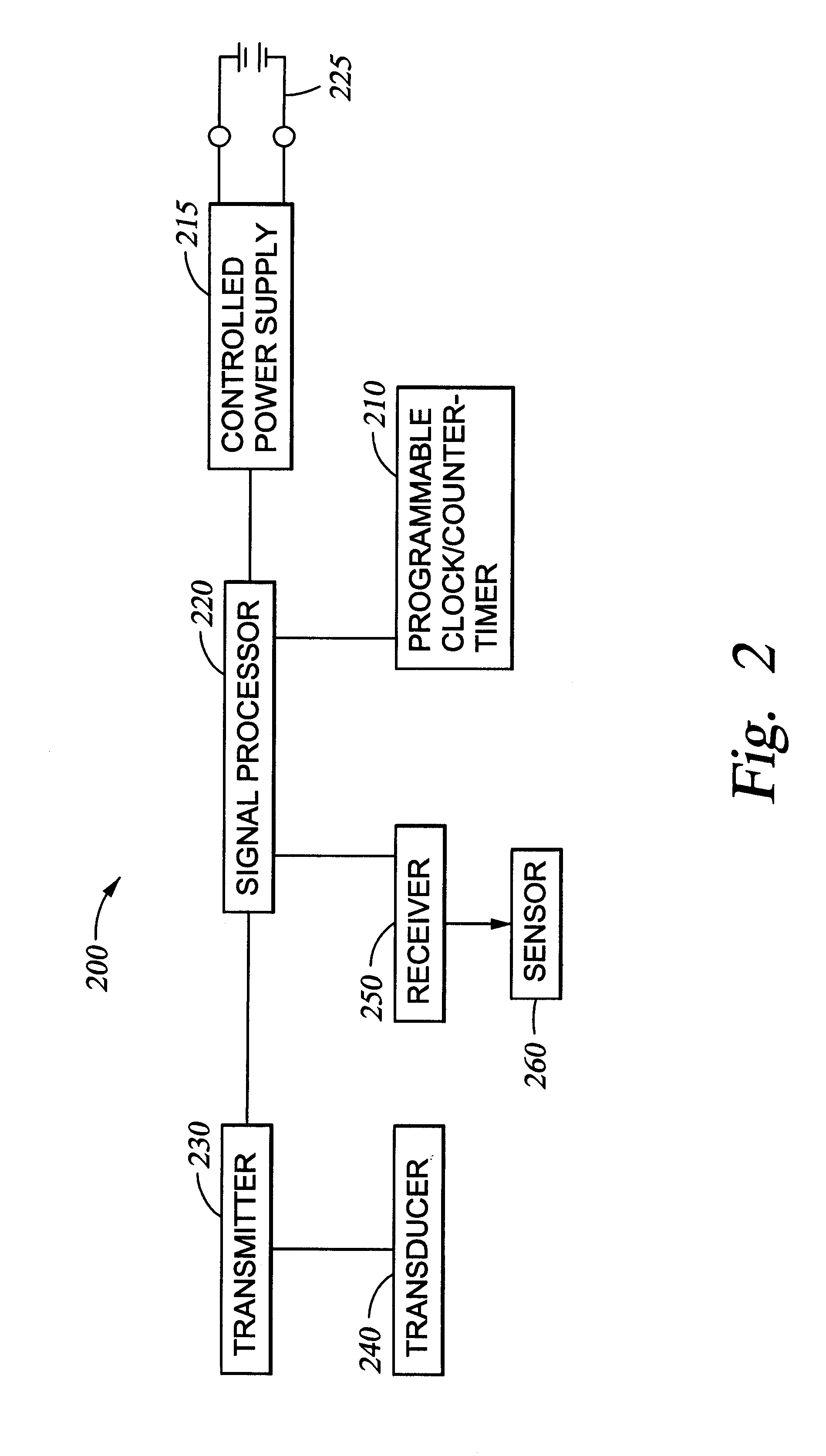Method for compensating for remote clock offset
a technology of offset compensation and remote clock, which is applied in the field of oilfield telemetry systems, can solve the problems of insignificant offset due to communication delay, time-consuming and extremely costly, and the need to remove the drilling assembly or "tripped" from the drilled borehol
- Summary
- Abstract
- Description
- Claims
- Application Information
AI Technical Summary
Problems solved by technology
Method used
Image
Examples
Embodiment Construction
Prototype experiments were conducted at the Halliburton Technology Center, at Carrollton. These experiments were carried out prove the feasibility of downhole clock synchronization. Additionally, these were conducted to study the effect of different depths of the downhole acoustic apparatus on the synchronization accuracy as well as, find the relative compensation accuracy of the two different types of transmitters. Referring now to FIG. 8, a schematic of the experimental set-up is shown. Apparatus 810 includes drop hammer 820. The drop hammer was devised by imparting velocity to a mass of steel using a pneumatic source and acts as the surface transmitter. The mass was allowed to impact on the cross-section of the pipe and thus impart an acoustic impulse in the tubing. Apparatus 810 further includes wireline 830, surface accelerometer 840, acting as the surface sensor, downhole SPCA transmitter 850, and downhole accelerometer 860, acting as the downhole sensor. Referring to FIG. 9, ...
PUM
 Login to View More
Login to View More Abstract
Description
Claims
Application Information
 Login to View More
Login to View More - R&D
- Intellectual Property
- Life Sciences
- Materials
- Tech Scout
- Unparalleled Data Quality
- Higher Quality Content
- 60% Fewer Hallucinations
Browse by: Latest US Patents, China's latest patents, Technical Efficacy Thesaurus, Application Domain, Technology Topic, Popular Technical Reports.
© 2025 PatSnap. All rights reserved.Legal|Privacy policy|Modern Slavery Act Transparency Statement|Sitemap|About US| Contact US: help@patsnap.com



